#bee pollen in Australia
Explore tagged Tumblr posts
Text
Unlocking the Power of Nature: The Benefits of Organic Bee Pollen

In a world constantly seeking natural remedies and superfoods, organic bee pollen in Australia has emerged as a powerhouse of nutrients and holistic wellness. Read this article for more details!
#organic bee pollen in Australia#organic bee pollen#organic bee pollen Australia#bee pollen in Australia#organic bee pollen online#organic bee pollen for sale#beepollen#beepollenaustralia#australia#buybeepollen#organicbeepollen#organic superfood powder#beepollenforsale
0 notes
Text

#bees#bee talks#bee#ecosystem#earth#ecology#pollen#pollenators#ausgov#politas#auspol#tasgov#taspol#australia#fuck neoliberals#neoliberal capitalism#anthony albanese#albanese government#pollution#pollutants#polluted water#polluters#eat the rich#eat the fucking rich#insects#insect#class war#anti colonialism#antinazi#antiauthoritarian
4 notes
·
View notes
Text
But Mr. Crowley called us bees?? 🐝 🐝 🐝
Angels, 🐝 🤯 💥
Please enjoy the infectious laughter of the Australian senate struggling to keep its composure while grilling a man about getting semen out of a bee
#australia#auspol#funny#crowley#good omens#muriel assistant bookshop keeper#aziraphale#muriel#ineffable husbands#david tennant#bee semen#not to be confused with pollen#explodes
60K notes
·
View notes
Text
BEES
When God made bees to love "pollen"
That was a master stroke! ... anonymous

0 notes
Text
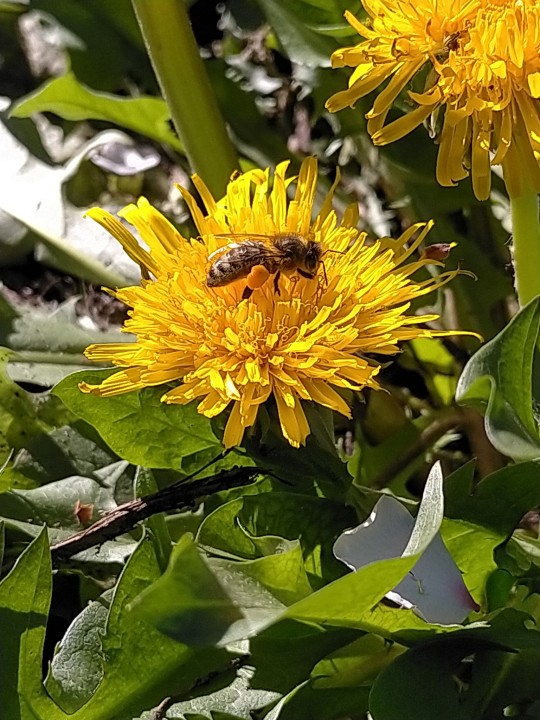
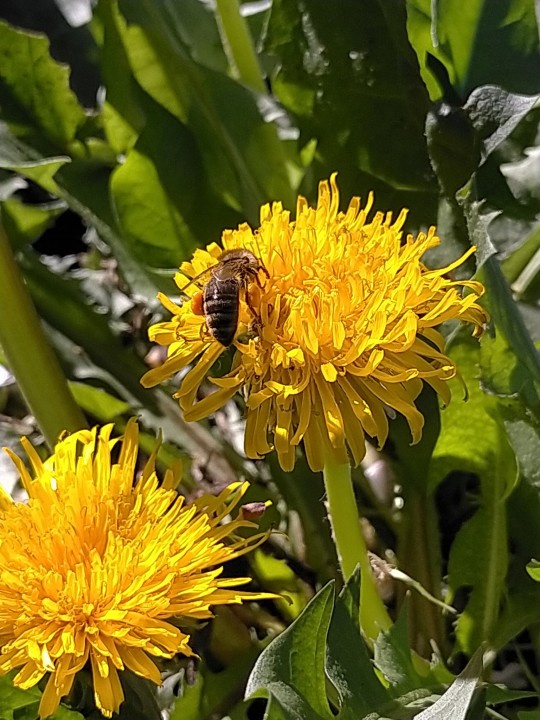
Honeybee on dandelion (look at those pollen baskets!!)
03-AUG-2023
Melbourne, Vic
#australia#victoria#melbourne#bee#honeybee#insect#arthropod#bug#pollination#pollen#animalia#arthropoda#insecta#hymenoptera#apidae#corbiculata#apini#apis#flowers#yellow#yellow flowers#dandelion#asterids#asterales#asteraceae#taraxacum#taraxacum officinale
1 note
·
View note
Text
Spreading this!!
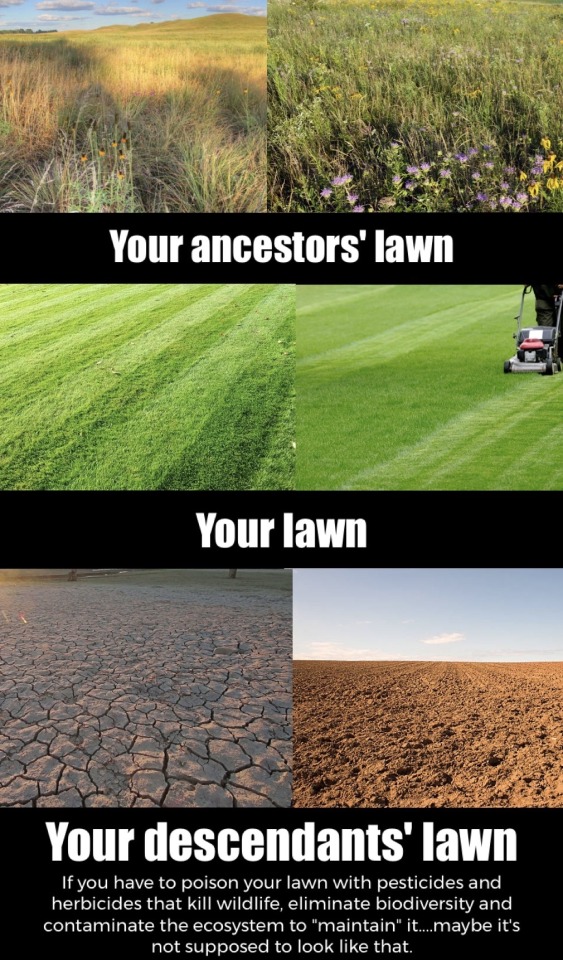

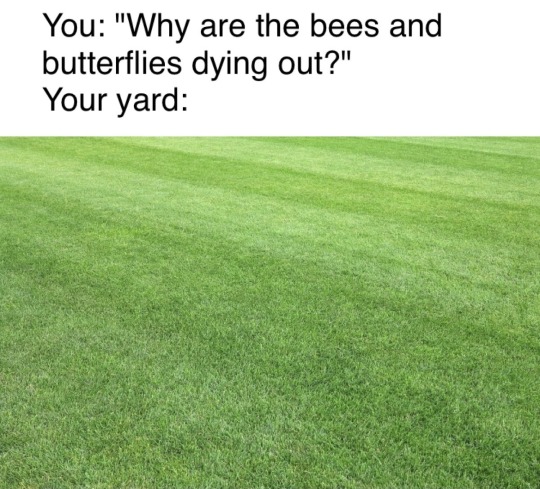



i need y'all to steal and repost my anti-lawn memes to as many pinterest boards and facebook pages as possible
#everyone go and look at the tags on previous rb to get angry#living in Australia makes this even more important because not only are bees dying out#honey bees are also brutal murderers of our native lnes#so we're losing our native bees even faster than the invasive species...#and we have a number of plant species with specific adaptations that mean the clumsy body of a honeybee can't get to their pollen/ pollinate#and#of course#native plants are way more water economical so they're cheaper#easier#and better for the planet!#seriously guys to hell with your monoculture boring lawns#and yes that does include clover lawns.#they may be better than Kikuyu grass but they're still monoculture.
133K notes
·
View notes
Note
Hi there! Saw a recent post of yours containing the phrase "honeybees are an ecological nightmare even within their native range," and while i'm all too aware of the invasiveness of European honeybees *outside* their range, i'd never heard of this before. Do you have some links to articles or something i could read more about this?
(to be clear, i believe you, i'm just curious & would like to know more)

ooh good question! for them being a disaster in their native range, the answer is that i half-remembered some information and don't actually know. i assumed that the high population densities of beekeeping would mean that mellifera have impacts on biodiversity within their native range, and this could be true, but my source is that i made it the fuck up. there's definitely precedent for native animals being "invasive" within their native range (see: noisy miner in eastern australia), but it looks like this is an area needing further study.
on the pollination front, this is a lot more rooted in known reality. honeybees aren't particularly great for pollination because they engage in activities like pollen theft at much higher rates than other bees. most papers on the topic look at the efficiency of mellifera pollinating just one plant species or a single genus, but there's an overall trend of them being subpar compared to other bee taxa (https://doi.org/10.1002%2Fajb2.16036, doi.org/10.1111/afe.12363, 10.1002/ajb2.1764, and a bunch of others). it's possible that the high population densities of domesticated honeybees in europe mean that they outcompete other native bees and reduce pollination efficiency, but. needs to be studied.
moral of the story. only trust half the things i say
9 notes
·
View notes
Text
Blog 3: Chinese Medicine, the 5 Elements & Me
In the previous blog, I touched on the yin and yang properties emphasized in Chinese medicine. The ancient Chinese sages also viewed the world in terms of a system of Five Elements: wood, fire, earth, metal, and water. These elements interact with each other and are found within all life, including our bodies.

Marie Hopkinson, a Chinese medicine practitioner in Australia, used the analogy of a plant to explain how these elements interact. The sun contributes fire to the plant, urging it to grow upward. The earth grounds the plant, allowing it to absorb nutrients. Metal refers to the wind and air, giving the plant oxygen. Also, the plant needs water to grow. If any of these elements get out of balance, the plant will not thrive. (To watch her video, follow link listed below to her video, "Why eat mostly cooked foods.)
I have been diagnosed by my acupuncturist as having dampness in my spleen, known as spleen energy deficiency, or spleen qi deficiency. The spleen-pancreas system, which is more of a functional term than a reference to these biological organs, is governed by the earth element. (To learn more about dampness in Chinese medicine, follow the link listed below to her video, "What is Dampness.)

Summer corresponds to the earth element because of its dampness. I have a particularly tough time with summer's humidity because I am allergic to molds, particularly leaf molds. Since we live in the woods, and not far from a large lake, I have to stay in the house with air filters on to get away from leaf mold.
Someone like me with a spleen-pancreas imbalance will suffer with chronic tiredness, a weak digestion, and many other issues. Imagine a plant that has been over-watered, sagging with yellow leaves and not growing as it should.
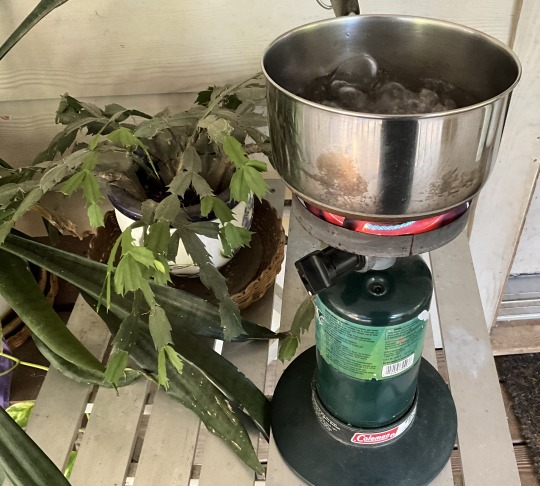
To understand the spleen-pancreas system's function, imagine a fire (the spleen) heating up a pot of fluids (the stomach). The stomach needs warm, moist, cooked foods so it does not have to overwork while getting the nutrients of the foods. If the fires of the spleen system has been depleted, like mine has, cold foods make it work too hard.
To gain energy, those with spleen energy deficiency will crave sweets. To supply this energy in a healthy way, not overloading the body with glucose which we all know creates a rollercoaster of sugar highs and lows, Chinese medicine recommends eating grains, especially rice, and some fruit, with plenty of vegetables. Fried foods, refined foods, dairy products and dampening fruits and vegetables should be limited.
Many of these changes have challenged me. As I mentioned in my previous blog, Total Health gave me a convenient table that categorizes food as drying, lubricating, neutral, and strengthening. Since not every practitioner agrees with what foods fit in what categories, I have chosen to follow Ting's advice. I use Pitchford's book as a reference. He provides in-depth descriptions of the various properties of foods along with information on what conditions they treat.

Unlike my mother, I do not excel in menu planning. When I was young, my brother and I were not allowed to just grab something to eat because my mother was probably planning to use it for a specific meal. My biggest challenge has been figuring out what to eat using Chinese medicine recommendations.
I found a recipe in Total Healing called "Morning Energy Mega Boost" that satisfies my desire for sweets in the morning. It contains oatmeal, protein powder, walnuts, black sesame seeds, bee pollen, figs, apricots, and dates. My stomach and my taste buds like it.
Having soup or rice congee, a soupy rice mixture, works for supper. Chinese medicine also recommends eating light in the evening, which I was already doing because the result is that I have less acid reflux at night.
This leaves the biggest dilemma--what to eat for our main meal. Chinese medicine recommends eating your main meal in the middle of the day. We have been doing that for quite some time because of my husband's work schedule. Pitchford recommends eating only a small amount of meat, but my husband and I have been eating meat all of our lives. I have yet to find many recipes that work for me, other than stir fries, because we have always centered our main meal around meat!
Open for suggestions!
Sources
Book References with links to them on Amazon:
Goldsmith, Ellen and Maya Klein. Nutritional Healing with Chinese Medicine. Robert Rose, 2017.
Pitchford, Paul. Healing with Whole Foods: Asian Traditions and Modern Nutrition. North Atlantic Books, 2002.
Ting, Esther and Marianne Jas. Total Health the Chinese Way: An Essential Guide to Easing Pain, Reducing Stress, Treating Illness, and Restoring the Body through. DaCapo Lifelong Books, 2009.
YouTube videos:
"What is Dampness? The Chinese Medicine Podcast with Marie Hopkinson," YouTube, uploaded by Chinese Medicine Podcast, 9 Jan. 2019, https://youtu.be/4u3N-N4kDMg?si=yBSL3E07DjuqJiRr.
"Why eat mostly cooked foods? The Chinese Medicine Podcast with Marie Hopkinson," YouTube, uploaded by Chinese Medicine Podcast, 13 Jul. 2071, https://youtu.be/hXprIWs1xeg?si=pX6v3nHphcfv4UJ2.
2 notes
·
View notes
Text



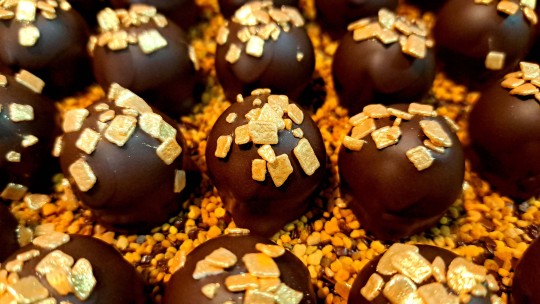
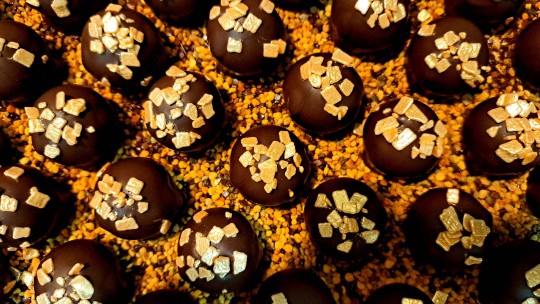

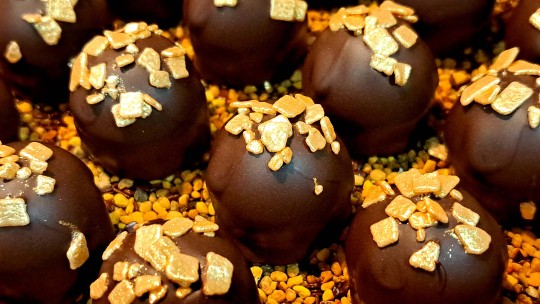

SELEUSS - TASMANIAN CHRISTMAS BUSH HONEY TRUFFLES
BATCH#: 1413, 1414
The Antipodean “Summer Christmas” Honey! Particularly in Summer, the Bursaria Spinosa erupts with millions of tiny white flowers the shape of a bursting star, hence the Christmas Bush. We combine Christmas Bush Honey from The Tasmanian Honey Co. with organic cream and our 32% LORETTA™ Light Milk Chocolate to complement its soft and mellow marzipan notes. Encased in a 30% BAUTA™ white chocolate first, then enrobed in a 66%+ COLOMBINA™ Semisweet, and rests on a bed of Spanish Bee Pollen with dark Pailletés fins and sprinkled with Golden Scaglietta flakes. (B1413, 1414) Pairing: Sauternes, Glenmorerangie Nector d’Or, and black teas.
TASMANIan CHRISTMAS BUSH HONEY TRUFFLE INGREDIENTS: ChocolateS (Cacao Beans, Sugar, Cacao Butter, Sunflower & soy Lecithin, Vanilla), TASMANIAN CHRISTMAS BUSH HONEY, organic cream, glucose. Rests on a bed of: BEE POLLEN, and pailletes fins (SUGAR, UNSWEETENED CHOCOLATE, COCOA BUTTER, WHOLE MILK POWDER, MILKFAT, NATURAL VANILLA FLAVOR), AND SPRINKLED WITH: GOLDEN SCAGLIETTA (SUGAR, DRIED WHOLE MILK, COCOA BUTTER, SOY LECITHIN, ARTIFICIAL FLAVORS, MICA-BASED PEARLESCENT, IRON OXIDE). CONTAINS: SOY, MILK, LACTOSE, honey. THIS PRODUCT IS PROCESSED IN A FACILITY THAT CONTAINS MILK, EGGS, WHEAT, HAZELNUTS, ALMONDS, PEANUTS AND OTHER NUTS. WARNING: Do not feed honey or honey related products like bee pollen to infants under 1 year of age. Ingredients From: ITALY, TASMANIA (AUSTRALIA), USA, FRANCE, Vietnam, PERU, SPAIN AND BELGIUM.

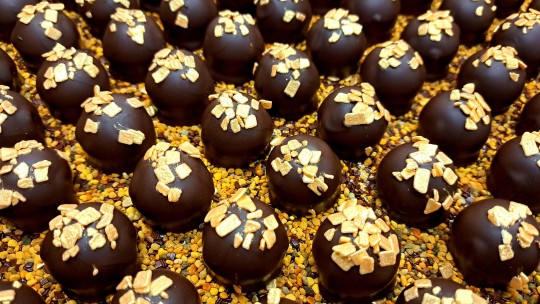
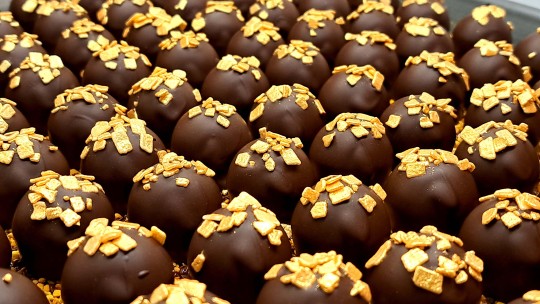



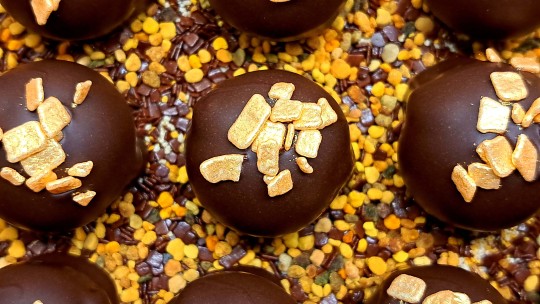

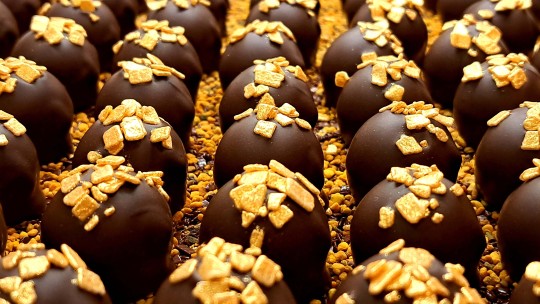



#seleuss#chocolates#tasmanian#tasmanianhoney#christmasbushhoney#christmas bush#bee pollen#beepollen#honeytruffles#honeychocolates#seleusschocolates#seleusshoney#chocolatetruffles#bursaria#bursariaspinosa#antipodean#seleusshoneytruffles#xmas#xmashoney#christmasbush
4 notes
·
View notes
Text
BB

BASICS
STAGE NAME \\ bb ( 비비 )
MEANING \\ bright, shining
BIRTH NAME \\ phoebe jones
KOREAN NAME \\ chu hee jin ( 추희진 )
NICKNAMES \\ feebs, bee, bumble bee, pj
BIRTHDAY \\ september 16, 2000
ZODIAC \\ virgo
CHINESE ZODIAC \\ dragon
BIRTHPLACE \\ perth, australia
HOMETOWN \\ adelaide, australia
HEIGHT \\ 159.2cm ( 5'3" )
WEIGHT \\ 48kg ( 105lbs )
BLOOD TYPE \\ o
ETHNICITY \\ korean - australian
NATIONALITY \\ korean - australian
LANGUAGES \\ english ( fluent ), korean ( fluent )

CAREER
GROUP \\ limbo ( 2012 - present )
POSITION \\ lead vocalist, sub rapper, maknae
REPRESENTATIVE SIN \\ wrath
REPRESENTATIVE VIRTUE \\ patience
COMPANY \\ pledis entertainment ( 2010 - present )
TRAINEE PERIOD \\ 2 years
DEBUT \\ september 18, 2012
DEBUT AGE \\ 12 years old
STATS
VOCALS \\ 8/10
DANCE \\ 6/10
RAP \\ 7/10
VARIETY \\ 10/10
ACTING \\ 5/10
PRODUCING \\ 4/10

PHYSICAL
TATTOOS \\ her members names in hangul on the inside of upper right arm, virgo symbol on left wrist, virgo constellation on inner right arm
PIERCINGS \\ four on left ear ( 4 x lobe ), four on right ear ( 4 x lobe ), one on left side of nose ( small hoop )
FACE CLAIM \\ bae su min ( stayc )
VOICE CLAIM \\ sumin ( stayc )
RAP CLAIM \\cocona ( xg )
PERSONAL
SEXUALITY \\heterosexual
EDUCATION \\ seoul broadcasting high school
MBTI \\esfp-t, entertainer
STRENGTHS \\bold, observant, adaptable
WEAKNESSES \\sensitive, poor long-term planner, conflict-averse
STYLE \\

LIKES \\ season 3 steve harrington, flavoured coffee, doing her members hair, making string bracelets, soundtracks written by phil collins, going to ikea, astrology, black & white outfits, performance art, getting gifts for her family, the singer aurora
DISLIKES \\ hospitals, people who think they're entitled, people watching her eat, being out of the loop, her stage name, strong smelling perfumes, people who use their popularity and status for their own benefit, egotists, gnomes, the taste of lavender, people who use her
HABITS \\ has a tendency to zone out, anytime and anywhere
TALENT \\ very flexible, can put her legs behind her head
HOBBIES \\ making string bracelets, building ikea furniture, going out for food
FEARS \\ nosocomephobia ( fear of hospitals )

FAMILY
MOTHER \\ helen jones ( 1975 )
FATHER \\ simon jones ( 1977 )
BROTHER \\ barnaby jones ( 1998 )
BROTHER \\ william jones ( 2002 )

TRIVIAL
ONE \\ was added to the group in the september of 2012
TWO \\ phoebe had a lot of doubts about joining the group a year after they'd debuted and really thought she wouldn't have any fans, however 'voids' were extremely lovely and welcomed her into the group with open arms
THREE \\ has rhinitis, mainly triggered by dust and pollen, but the occasional animal fur can set her off too
FOUR \\ cannot stand he stage name; has said she would much rather be known as heejin than bb
FIVE \\ phoebe hates people watching her eat, so she tends to turn away or cover her face with her hands whilst eating
SIX \\ was diagnosed with endometriosis at the age of 14
SEVEN \\ her representative sin is wrath
EIGHT \\ her representative virtue is patience
NINE \\ her representative symbol is a bear
TEN \\ her representative colour is red
9 notes
·
View notes
Text
What to Expect After Contacting an Australian Superfood Supplier?
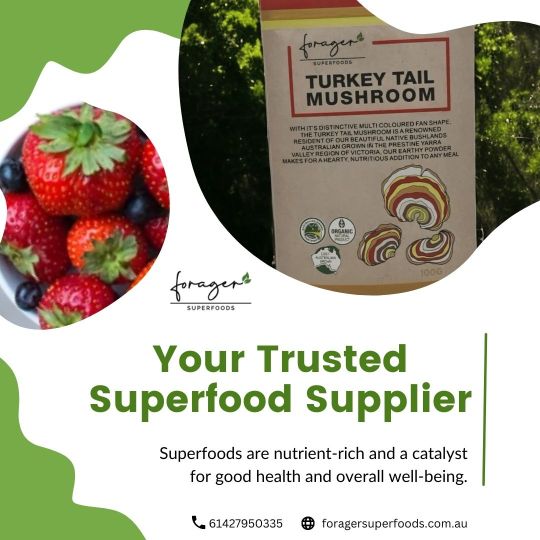
Are you starting a journey to enhance your well-being with superfoods? Then, turn to a renowned company offering the best quality superfoods. Here's what you can expect after reaching out to a reputable supplier: Read this article for more details!
#organic superfood powder#superfood supply australia#superfood supplier australia#australian superfood supplier#organic superfoods online#best green superfood powder#organic nutritional foods#organic acai berry powder online#buy organic bee pollen online#organic camu camu powder online#organic lions mane mushroom#turkey tail mushroom online
0 notes
Text
Crotalaria cunninghamii
Crotalaria cunninghamii - Introduction: Crotalaria cunninghamii is a short-lived perennial plant native to Australia and its habitat is the deserts, coastlands, drainage lines and sand dunes of the northern half of Western Australia and the Northern Territory. It blooms from January to April and is pollinated by large bees and honeyeaters. Identification of Crotalaria cunninghamii: Crotalaria cunninghamii was identified by Alan Cunningham on a naval expedition in North Western Western Australia in the 1810s. During a seven-month trip to North Western Western Australian in 1817, Cunningham collected more than 300 different species, one of which was Crotalaria cunninghamii. Description of Crotalaria cunninghamii: The green birdflower is a perennial shrub that grows to about 1–3 m in height. The plant's flowers grow on long spikes at the ends of its branches and greatly resembles a bird attached by its beak to the central stalk of the flowerhead. Habitat of Crotalaria cunninghamii: Crotalaria cunninghamii predominantly grows in well drained soils in shrubland and grassland or savannah woodlands, usually on desert dunes, sandplains and drainage lines. It also grows in Mulga communities in arid regions, accounting for 20% of the total land mass of arid Australia. Economic uses of Crotalaria cunninghamii: Crotalaria cunninghamii has some economic purposes and is a good source of fibre used for weaving. It is also a popular ornamental flower and was featured as the in-season flower of the month by the Australian Botanic Gardens and Park Authority in March 2019. Crotalaria cunninghamii's main economic use is as an ornament in houses. Another economic purpose is processing into a fibre to create ropes and fish nets. It has shown potential to be used in commercial agriculture, as it has a symbiotic relationship with bacteria in the soil which forms nodules and traps atmospheric nitrogen in the surrounding soil. It has a large percentage of crude oil and protein that could potentially be of use in producing biofuel or human use natural oils. Medicinal uses of Crotalaria cunninghamii: Crotalaria cunninghamii can provide medicinal support to humans, as the leaves can be used to treat eye infections and the bark can be used to treat swelling of the limbs. The Aboriginal Australians used it as an important medicine for treating swelling and eye infections. Known hazards of Crotalaria cunninghamii: There have been no reports of Crotalaria cunninghamii being toxic to humans, however, human toxicity has been seen in the Crotalaria genus. Many members of the Crotalaria genus are known to contain pyrrolizidine alkaloids, which have a cumulative effect upon the body and may affect brain function and other organs. Mutagenic and carcinogenic properties of pyrrolizidine alkaloids have also been reported. Abnormal pollinators of Crotalaria cunninghamii: Crotalaria cunninghamii is usually pollinated by birds, but during a period of unusually high rainfall in the Simpson Desert, rodents were observed eating and pollinating the flowers. The rodents observed were the house mouse and sandy inland mouse. The increase in the number of pollinators had a positive effect on the propagation of the species. Crotalaria cunninghamii and Bees: Bees derive their energy from the nectar of Crotalaria cunninghamii and in return they pollinate the plant. When bees feed from one male plant and then go to a female plant, some of the pollen falls into the female plant's stigma. Threats to Survival: Possible threats to Crotalaria cunninghamii include habitat degradation, especially on sandy soils which are easily eroded by rabbits, camels and other grazing animals. Crotalaria cunninghamii has been recognised as an endangered plant in NSW according to the NSW Threatened Species Conservation Act 1995. A general threat to flowers and plants in Australia is clearing of land for agricultural or other commercial uses. Conservation Status: The conservation status of Crotalaria cunninghamii is least concern. Crotalaria cunninghamii is not at high risk to land clearing for commercial purposes because it is confined to the Australian rangelands, which experience low rainfall and therefore have limited potential for development. References: Crotalaria cunninghamii. anpsa.org.au. Allan Cunningham (1791 - 1839) - Pacsoa. pacsoa.org.au. Traditional Ecological Knowledge of Nyangumarta Warrarn Indigenous Protected Area. ymac.org.au. A Review of Crotalaria L. (Fabaceae: Crotalarieae) in Australia. Austrobaileya. Did This Plant Evolve to Look Like a Bunch of Hummingbirds. audubon.org. Shoes of Invisibility and Invisible Shoes: Australian Hunters and Gatherers and Ideas on the Origins of Footwear. search.informit.org. Custodians open up Carnarvon Range. The West Australian. The chemical composition of seeds from some Australian plants. Australian Journal of Agricultural Research. Mankind. 7th ed. Pyrrolizidine Alkaloid - an overview | ScienceDirect Topics. sciencedirect.com. The Leguminosae; A Source Book of Characteristics, Uses and Nodulation. University of Wisconsin. MEDLINE, PubMed, PubMed Central, and the NLM. Editors' Bulletin. Cheater or mutualist? Novel florivory interaction between nectar‐rich Crotalaria cunninghamii and small mammals. Austral Ecology. Pollination - The Australian Museum. australian.museum. Species Summary - Crotalaria cunninghamii - Sampled Red List. threatenedplants.myspecies.info.
2 notes
·
View notes
Text
The Love Lies and Sweet Rewards of Australian Orchids
The Love Lies and Sweet Rewards of Australian Orchids https://ift.tt/wFm8gNB At school we’re taught that pollination is a partnership. Plants provide a reward, like nectar, and in return insects carry pollen to other plants. Producing a reward takes effort, wouldn’t it be easier to provide nothing? But how then would you attract pollinators? Australian Greenhood Orchids (Pterostylis) use their sexual wiles, by luring fungus gnats into thinking they’ve found a mate. Research by Hayashi and colleagues, published in the Botanical Journal of the Linnean Society, has found four new cases of pollination by sexual deception of male fungus gnats in Pterostylis. The secret of attraction for Pterostylis is in the scent. Previous research on one species, Pterostylis orbiculata, showed it released a very specific cocktail of chemicals that, to an amorous male gnat, smells like a female gnat. The scientists found that each orchid species only attracted a single type of gnat. Specialisation makes sense. This way, when the disappointed gnat leaves to find an actual gnat, you can be sure your limited amount of pollen is going to the right species of orchid and not getting wasted being delivered to the wrong orchid. Although, there is a chance your pollen will be to a bewildered or exasperated female gnat who wonders why all these suitors insist on wearing orchid pollen. The publication is the result of three seasons of study in southern Australia. The team used an experimental technique called “flower baiting” – carefully moving picked orchid flowers through different landscapes to observe which insects they attracted. The study produced over 288 hours of observations. The insects themselves were identified using microscopes and DNA analysis to confirm identifications. This work back in the lab also confirmed a surprising observation in the field. Hayashi and colleagues had seen gnats appearing to feed at two orchids, Pterostylis crispula and Pterostylis furva, that had been sexually deceiving them. Were the orchids combining strategies? They watched where the gnats fed, and then tested these parts of the flower in the lab for sugar sampling. In both cases, the orchids appeared to be producing small amounts of sugar as reward, as well as deceiving the pollinators. Sexual deception of pollinators in orchids is well known, so these results don’t turn everything upside-down. However, sexual deception has mainly focused on bees and wasps. No one has looked at gnats in this way. The research shows that while we may overlook gnats, plants certainly don’t. With twenty-eight species of Pterostylis threatened in Australia, getting a better view of this relationship is vital for conservation. Hayashi, T., Reiter, N., Phillips, R.D., & Peakall, R. (2025). How widespread is pollination by sexual deception of fungus gnats in Pterostylis (Orchidaceae)? Botanical Journal of the Linnean Society. https://doi.org/10.1093/botlinnean/boae088 Cross-posted to Bluesky & Mastodon. Image: Pterostylis recurva by Gnangarra / Wikimedia Commons, CC BY 2.5 AU https://creativecommons.org/licenses/by/2.5/au/deed.en, The post The Love Lies and Sweet Rewards of Australian Orchids appeared first on Botany One. via Botany One https://botany.one/ January 28, 2025 at 09:00AM
1 note
·
View note
Text
The Cafe’s Secret for Acai & Yogurt Bowls.

If you find you can not quite re-create that special taste at home for your Acai Bowl or your Yogurt Bowl. Then its probably because you haven’t realised their secret ingredient. It’s not what you might think. It’s the Granola. Most of Australia’s cafes use a special, purpose made, really crunchy Aussie granola called Roasted Almond Crunch by Mulberry Tree Fine Foods. No other granola is as good. A lot of people snack on it apart from using it as a yummy breakfast cereal. Mulberry Tree now manufacture the Roasted Almond Crunch recipe in multiple private label brands for different Australian Acai importers and Acai franchise stores. So the retail bags at your local cafe or take away may not say “Roasted Almond Crunch” on the pack, but if it super crunchy and tasty, and leaves you wanting more, then you can bet that’s what the granola is. And if its not nice and crunchy, then its not RAC? If your local has a great Acai Bowl or Yogurt Bowl take note of their granola ingredient and buy some to take home if they are retailing it separately. If not offered, then consumers can order it online through the manufacturers parent company: operafoods.com.au Hi I am Lahaina, and this is my simple recipe for a fresh version of an Acai/ Yogurt Bowl. I love them both together. 100g of Frozen Acai Pulp. (You can buy it at Woolies) 1 Full Cup of Roasted Almond Crunch granola. Half a fresh banana, sliced. Half a punnet (A fistfull ) of Bluberries (Wash them) Half a punnet (A fistfull ) of Strawberries (Wash them) Top with 2 big generouse dollops of natural Yogurt. This is a really tasty meal that is very good for you and that you wont regret. I often add a little more granola before I am finished to make it tasty and crunchy to the last spoonfull. If you dont have the time for fresh fruit toppings, then Opera Foods offer multiple dry goods superfood toppings like Fruit Powders, chia seeds and bee pollen etc. under the Boost Nutrients brand that you can keep long term in your pantry for your convenience. If your local cafe doent really get it with the quality of the granola. Give them the hint they will thank you later. This article was reproduced on this site with permission from operafoods.com.au the “Vegan Granola Manufacturers”. See original article:- The Cafe’s Secret for Acai & Yogurt Bowls Read the full article
0 notes
Text









Pond "Psychedelic Mango"2009 + "Corridors Of Blissterday" 2009 + "Frond" 2010 + "Beard, Wives, Denim" 2012 double LP + "Hobo Rocket" 2013 + "The Weather" 2017 + "Sessions"2019 double LP + "9" 2021 + "Stung!" 2024 : Perth,Australia Psych Pop Rock,Neo Psych (Tame Impala,The Growl,The Novocaines,Mink Mussel Creek,The Dee Dee Dums,Allbrook/Avery...members)
full spotify
https://open.spotify.com/album/306FL5C4doJSQqcqVF5LZu
https://open.spotify.com/album/4JcZo9SqwxrbDqsLf3e2WF
https://open.spotify.com/album/6qvWzoGkU310CqOrUNm5sQ
https://open.spotify.com/album/30nepSGmLUyTrQUthl35R2
https://open.spotify.com/album/3flX72PpF0OuV53f5HrKoS
https://open.spotify.com/album/1OPNyMf1xQGDLE1PEwdkgs
https://open.spotify.com/album/5LAlbeTcdTRkh3hmVIEjMf
https://open.spotify.com/album/5bZ876MvlpW4MQhAZFBBdp
Pond is an Australian psychedelic rock band from Perth, Western Australia, formed in 2008. Initially featuring a revolving line-up, since 2016 the band has consisted of Nick Allbrook, Jay Watson, Shiny Joe Ryan, Jamie Terry, and James Ireland.
Pond "Psychedelic Mango"2009
Line-up / Musicians - Nick Allbrook / vocals, flute, keyboards, guitar - Jamie Terry / keyboards, bass - Jay Watson / drums, guitar, keyboards, bass, backing vocals - Joseph Ryan / guitar, bass, backing vocals - Nick Odell / conga - Richard Ingham / voice of God, guitar Tracklist That Is How We Came 5:57 Psychedelic Mango Vision 4:49 Gringolet's Drunken Baggage 7:06 Sweeping My Mind Tunnel 1:30 Don't Look At The Sun Or You'll Go Blind 2:50 Mick Manmoose 3:48 Paisley Adams 3:48 Bees (a) B (b) Pollen (c) Pond Loves You 9:13
Pond "Corridors Of Blissterday" 2009
Line-up / Musicians - Jamie Terry / keyboards, bass - Jay Watson / guitar, keyboards, bass, drums, backing vocals - Joseph Ryan / guitar, bass, backing vocals - Matthew Saville / drums - Nick Allbrook / vocals, flute, keyboards, guitar - Richard Ingham / synthesizer - Nathan Savage / guitar Tracklist 1 Corridors Of Blissterday 2:43 2 Cattarpilla Mansion 7:46 3 Sweet Loretta 8:04 4 Lightning Hip 4:50 5 Mist In My Brain Forrest 7:28 6 Ascending 7:50
Pond "Frond" 2010
Line-up / Musicians - Nick Allbrook / vocals, flute, keyboards, guitar - Jamie Terry / keyboards, bass - Jay Watson / guitar, keyboards, bass, backing vocals - Joseph Ryan / guitar, bass, backing vocals - Kevin Parker / drums Tracklist Betty Davis (Will Come Down From The Heavens To Save Us) 2:09 Cloud City 3:15 Torn Asunder 4:44 Duck And Clover 4:13 Sunlight Cardigan 4:24 Annie Orangetree 3:28 The Place Behind A Duck 1:53 Mother Nigeria 3:57 Mussels Tonight? 4:43 Frond 8:49
Pond "Beard Wives Denim" 2012 double LP
Line-up / Musicians - Nick Allbrook / vocals, flute, keyboards, guitar, slide guitar, drums - Jay Watson / vocals, guitar, keyboards, synth, bass, backing vocals, drums - Joseph Ryan / vocals, guitar, 12-string guitar, slide guitar, bass, backing vocals - Jamie Terry / keyboards, organ, bass - Kevin Parker / drums Tracklist Fantastic Explosion Of Time When It Explodes Elegant Design Sorry I Was Under The Sky Sun And Sea And You Allergies You Broke My Cool Moth Wings Leisure Pony Mystery Dig Brother Eye Pattern Blindness Moreno's Blend
Pond "Hobo Rocket"2013
Line-up / Musicians - Nick "Paisley Adams" Allbrook / vocals, flute, keyboards, guitar - Jay Watson "Wesley Goldtouch/Wirey B. Buddah" / guitar, keyboards, bass, backing vocals - Joseph "Shoseph Orion McJam" Ryan / guitar, bass, backing vocals - Cam Avery / drums - Jamie Terry / keyboards, bass Tracklist Whatever Happened To The Million Head Collide? 4:42 Xanman 5:50 O Dharma 4:56 Aloneaflameaflower 4:32 Giant Tortoise 4:12 Hobo Rocket 3:35 Midnight Mass (At The Market St. Payphone) 6:13
Pond "The Weather" 2019
Line-up / Musicians - Pond (Nicholas Allbrook, Jay Watson, Joe Ryan, Jamie Terry) / vocals, instrumentation With: - Christian Ruggiero / horns (1,7), saxophone (4) - Jamie Canny / horns (1,7) - Sam Newman / horns (1,7) - Mei Saraswåati / vocals (2,4) - Kirin J. Callinan / vocals (3,4), guitar noises (9) - James Ireland / piano (6) Tracklist 30000 Megatons 4:02 Sweep Me Off My Feet 3:29 Paint Me Silver 3:44 Colder Than Ice 3:10 Edge Of The World Pt. 1 4:54 A/B 3:28 Zen Automaton 4:01 All I Want For Xmas (Is A Tascam 388) 2:36 Edge Of The World Pt. 2 6:22 The Weather 3:58
Pond "Sessions"2019 double LP
Tracklist A1 Daisy 4:07 A2 Paint Me Silver 3:41 A3 Sweep Me Off My Feet 3:27 B1 Don't Look At The Sun (Or You'll Go Blind) 6:23 B2 Hand Mouth Dancer 4:37 B3 Burnt Out Star 7:20 C1 Tasmania 4:11 C2 Fire In The Water 4:20 C3 The Weather 4:39 D1 Medicine Hat 3:37 D2 Man It Feels Like Space Again 8:10
Pond "9" 2021
Line-up / Musicians - Nick Allbrook / lead vocals, synthesizer - Jay Watson / vocals, bass, drums, guitar, synthesizer - Shiny Joe Ryan / guitar, synthesizer - Jamie Terry / production - James Ireland / keyboards, programming With: - Maud Nadal / additional vocals (1) - Jesse Kotansky / strings (1,4,8,9) - Christian Ruggiero / saxophone (1,2) - Amaya Courtis / additional vocals (4,7) - Laurel / additional vocals (6) - Evelyn Ida Morris / piano (8) - Brod Madden-Scott / live instrumental engineering (3,6,9) Tracklist Song for Agnes 4:14 Human Touch 3:20 America's Cup 3:50 Take Me Avalon I'm Young 3:30 Pink Lunettes 5:46 Czech Locomotive 4:50 Rambo 5:03 Gold Cup / Plastic Sole 4:26 Toast 4:10
Pond "Stung!" 2024
Line-up / Musicians - Nick Allbrook / lead vocals, synthesizer - Jay Watson / vocals, bass, drums, guitar, synthesizer - Shiny Joe Ryan / guitar, synthesizer - Jamie Terry / production - James Ireland / keyboards, programming Tracklist Constant Picnic (I’m) Stung Neon River So Lo Black Lung Sunrise For The Lonely Elf Bar Blues Edge Of The World Pt. 3 Stars In Silken Sheets Boys Don’t Crash O, UV Ray Last Elvis Elephant Gun Fell From Grace With The Sea
Pond "Tasmania" 2019 Australia Indie Rock,Neo Psych,double vinyl (Tame Impala,The Growl,The Novocaines, Mink Mussel Creek,The Dee Dee Dums,Allbrook/Avery...members)
https://johnkatsmc5.blogspot.com/2020/04/pond-tasmania-2019-australia-indie.html
Pond "Man It Feels Like Space Again" 2015 Perth,Australia Neo Psych,Psych Pop Rock (Tame Impala,The Growl,The Novocaines, Mink Mussel Creek,The Dee Dee Dums,Allbrook/Avery...members)
https://johnkatsmc5.blogspot.com/2025/01/pond-man-it-feels-like-space-again-2015.html?view=magazine
Pond "Psychedelic Mango"2009 + "Corridors Of Blissterday" 2009 + "Frond" 2010 + "Beard, Wives, Denim" 2012 double LP + "Hobo Rocket" 2013 + "The Weather" 2017 + "Sessions"2019 double LP + "9" 2021 + "Stung!" 2024 : Perth,Australia Psych Pop Rock,Neo Psych (Tame Impala,The Growl,The Novocaines,Mink Mussel Creek,The Dee Dee Dums,Allbrook/Avery...members)
https://johnkatsmc5.blogspot.com/2025/01/pond-psychedelic-mango2009-corridors-of.html?view=flipcard
https://johnkatsmc5.tumblr.com/post/773115869209460736/pond-psychedelic-mango2009-corridors-of
#Pond “Stung!”#Pond “9”#Pond “Sessions”#Pond “The Weather”#Pond “Hobo Rocket”#Pond “Beard Wives Denim”#Pond “Frond”#Pond “Corridors Of Blissterday”#Pond “Psychedelic Mango”#australia psychedelic rock#australia psychedelic pop#australia neo psych
0 notes
Text
From Hive to Jar: The Art of Swan Valley Honey Production

The journey of honey from hive to jar is a fascinating process, especially when it involves the pristine landscapes of Swan Valley. This beginner's guide delves into the intricate steps of honey production and why Swan Valley Honey is celebrated for its quality and authenticity.
1. The Buzz Behind Swan Valley Honey
The Swan Valley region is renowned for its rich biodiversity, offering ideal conditions for beekeeping. With abundant wildflowers and pristine air, the area provides bees with the perfect environment to create high-quality honey. Swan Valley Honey is not just a treat for your taste buds; it's a reflection of the region's natural beauty.
2. Setting Up the Hive
Every jar of Swan Valley Honey begins with carefully managed beehives. Beekeepers place hives in locations rich in native flora to ensure bees have access to the best nectar. This thoughtful placement also supports pollination, helping local ecosystems thrive.
Transitioning from hive maintenance to honey production, beekeepers ensure the health and well-being of the bees, as healthy bees are essential for high-quality honey.
3. The Role of Bees in Honey Creation
Bees are nature's little alchemists. They collect nectar from flowers and transform it into honey through a fascinating process involving enzymes and evaporation. The bees then store the honey in honeycombs, sealing it with wax for safekeeping.
Beekeepers in Swan Valley use sustainable methods to extract honey, ensuring that the bees have plenty left to sustain their colony. This process maintains the balance between harvesting and supporting the bees.
4. Harvesting and Extracting the Liquid Gold
When the honey is ready, beekeepers carefully harvest the honeycombs from the hive. Using specialized equipment, they extract the honey without damaging the comb structure.
In Swan Valley, this process is done with precision and care to retain the honey's natural nutrients. This attention to detail ensures that every jar is packed with goodness, including traces of bee pollen Australia—a nutrient-rich byproduct with numerous health benefits.
5. Bottling the Purity of Nature
Once extracted, the honey is filtered to remove impurities but not overprocessed, as this can strip away its natural qualities. Swan Valley Honey is bottled with minimal interference, preserving its raw, unfiltered essence.
Each jar reflects the hard work of both bees and beekeepers, offering customers a pure and wholesome product straight from nature.
6. The Health Benefits of Swan Valley Honey
Swan Valley Honey is more than just a sweetener. It’s a powerhouse of health benefits. Packed with antioxidants, antibacterial properties, and nutrients like bee pollen Australia, it supports immunity, aids digestion, and offers a natural energy boost.
Incorporating Swan Valley Honey into your diet is a simple way to enjoy a delicious treat while reaping health rewards. Whether drizzled over toast, stirred into tea, or used in skincare, its versatility is unmatched.
From Hive to Home: A Sweet Conclusion
The art of honey production in Swan Valley is a harmonious blend of nature and craftsmanship. From thriving beehives to careful harvesting and bottling, every step ensures the honey's quality and authenticity. Next time you enjoy a spoonful of Swan Valley Honey, you'll appreciate the incredible journey it took to reach your table.
1 note
·
View note